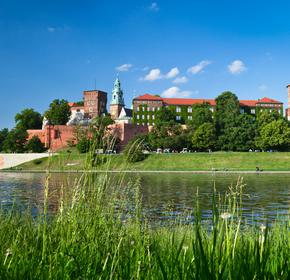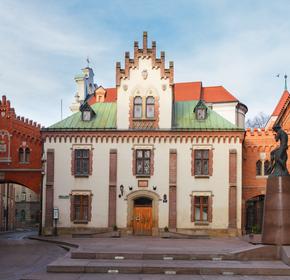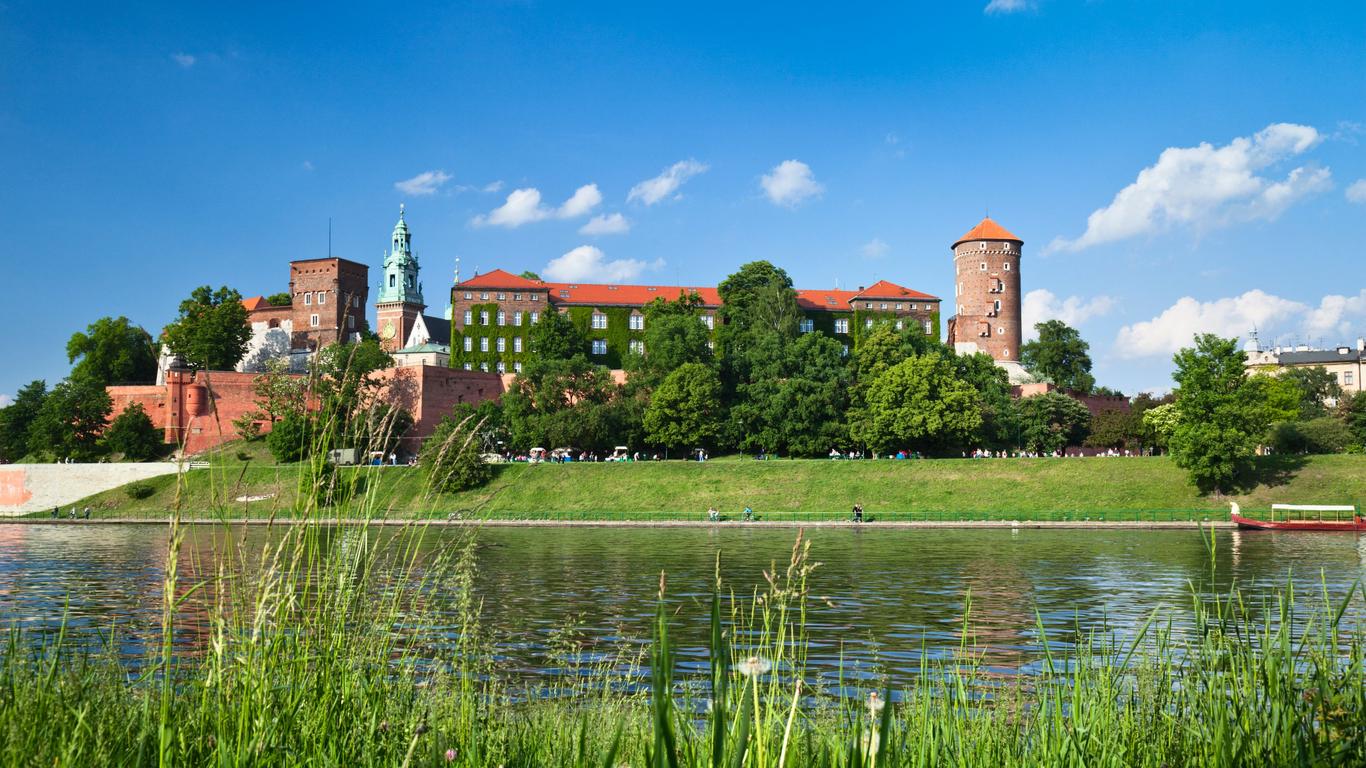
Krakow travel guide
Krakow Tourism | Krakow Guide
You're Going to Love Krakow
According to the stories, Krakow was founded by defeating a dragon and today's city reflects something of that dramatic birth.

This is one of the most beautiful cities in Europe and, largely undamaged in World War II, it has one of the best-preserved city centers. Indeed, the ancient architecture is one of the main attractions.
The Old Town features many soaring church spires and fascinating museums, along with the largest market square in Europe, Rynek Glowny. Kazimierz is the atmospheric Jewish Quarter, soaked in history and bustling with bars and restaurants.
The city also buzzes with bars and nightlife and the diversity of a university town. It's also an easily walkable city with plenty of charming backstreets and alleyways in which to get pleasantly lost.
Top 5 Reasons to Visit Krakow
1. Exploring Wawel Castle
Wawel Castle dominates the Old Town from its lofty position on the hill overlooking the River Vistula to the south. It is widely thought to be one of the most beautiful castles in Europe and dates from the 16th century. You can walk the grounds for free, but the five museums and exhibitions all require separate entry tickets.
2. Browse Rynek Glowny
Krakow's main square has been the center of city life for some 700 years. Surrounded by bars and restaurants, it is a wonderful place to eat, drink, and soak up the atmosphere. At the center of the square is the fabulous Cloth Hall, thought to be the oldest covered shopping mall in the world.
3. Dive Deep into Rynek Underground
Rynek Glowny is impressive enough but by going underground you can get a completely different perspective on the square. Ancient tunnels and medieval market stalls are brought to life by holograms and audiovisual displays.
4. Schindler's Factory
This fascinating museum covers the time of Nazi occupation of Krakow in World War II. It is sited in the enamel factory once owned by Oskar Schindler, whose story was told in the film Schindler's List.
5. Wieliczka Salt Mine
Just 10 miles southeast of Krakow, the Wieliczka Salt Mine is a popular day trip. A vast labyrinth of tunnels and chambers has been carved from the salt, and it makes for a fascinating guided tour.
What to do in Krakow
1. Stare Miasto: The Oldest Part of Town
Encircled by lush parklands, the old city center is home to some of Krakow's greatest sights. Start at the medieval Main Square, one of the largest in Europe. Visit both St. Mary's Basilica and the 13th-century Cloth Hall market - now a beautiful museum. Just outside you will find the Adam Mickiewicz Monument, and for some context, the Historical Museum of Kraków. Wander the surrounding streets until you reach St. Florian's Gate, which once defended the entrance to this ancient part of town.
2. Wawel Castle: Medieval and Majestic
At the edge of Stare Miasto, this age-old castle has overlooked the Vistula River since the Middle Ages. One of the country's most culturally significant attractions, the fortress was a long time home to Polish monarchs before becoming a world-class museum of art. Visit the Crown treasury and armory to immerse yourself in dazzling artifacts of priceless historical value, and wander outside to take in the equally precious cityscape across the water. Royal gardens await for a delightful stroll too.
3. Muzeum Książąt Czartoryskich: Temple of Memory
Established for the preservation of Polish heritage by Princess Izabela Czartoryska, the collection in this museum is a treasure trove. Each artwork sheds light on the history of the country meaning that a journey through the gallery is both aesthetic and enlightening. Masterpieces like Leonardo da Vinci's "Lady with an Ermine" can be admired for hours, the skill unparalleled, while priceless works of art stolen during World War II are still sorely missed - a fascinating history.
4. Kopalnia soli Wieliczka: Underground Salt Cathedral
Until 2007, this 13th-century mine actively produced table salt in what can only be described as an underground metropolis. Since it opened as a tourist attraction, visitors have been mind-blown by the elaborate subterranean network. A tour takes you through 2 miles of the labyrinth, a mere fraction of the vast space, yet surprises await at every turn. Chandeliers of salt-crystals, enormous chapels, and incredible carvings speckle the caves - it's like nothing you've ever seen before.
5. Kazimierz: Reflect on the Centuries
Along the Vistula River, this time-worn neighborhood is both charming and historic. Visit the gothic-style Corpus Christi Basilica to explore one of the oldest churches in the city, and wander onwards to discover the Jewish heritage of the quarter. Synagogues abound, and the Old Synagogue provides context about the neighborhood with its Jewish History Museum. Remah Cemetery bears generations of history, and to commemorate Jewish victims of the Holocaust; you can also consider a day trip to Auschwitz.
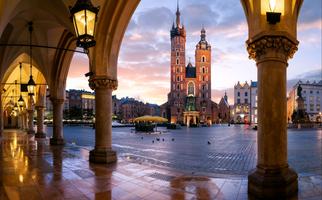

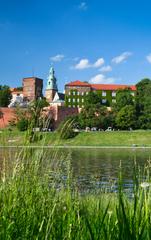


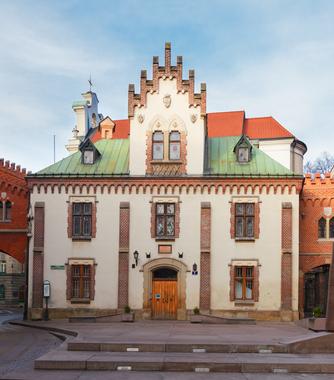
1. Stare Miasto: The Oldest Part of Town
Encircled by lush parklands, the old city center is home to some of Krakow's greatest sights. Start at the medieval Main Square, one of the largest in Europe. Visit both St. Mary's Basilica and the 13th-century Cloth Hall market - now a beautiful museum. Just outside you will find the Adam Mickiewicz Monument, and for some context, the Historical Museum of Kraków. Wander the surrounding streets until you reach St. Florian's Gate, which once defended the entrance to this ancient part of town.
2. Wawel Castle: Medieval and Majestic
At the edge of Stare Miasto, this age-old castle has overlooked the Vistula River since the Middle Ages. One of the country's most culturally significant attractions, the fortress was a long time home to Polish monarchs before becoming a world-class museum of art. Visit the Crown treasury and armory to immerse yourself in dazzling artifacts of priceless historical value, and wander outside to take in the equally precious cityscape across the water. Royal gardens await for a delightful stroll too.
3. Muzeum Książąt Czartoryskich: Temple of Memory
Established for the preservation of Polish heritage by Princess Izabela Czartoryska, the collection in this museum is a treasure trove. Each artwork sheds light on the history of the country meaning that a journey through the gallery is both aesthetic and enlightening. Masterpieces like Leonardo da Vinci's "Lady with an Ermine" can be admired for hours, the skill unparalleled, while priceless works of art stolen during World War II are still sorely missed - a fascinating history.
4. Kopalnia soli Wieliczka: Underground Salt Cathedral
Until 2007, this 13th-century mine actively produced table salt in what can only be described as an underground metropolis. Since it opened as a tourist attraction, visitors have been mind-blown by the elaborate subterranean network. A tour takes you through 2 miles of the labyrinth, a mere fraction of the vast space, yet surprises await at every turn. Chandeliers of salt-crystals, enormous chapels, and incredible carvings speckle the caves - it's like nothing you've ever seen before.
5. Kazimierz: Reflect on the Centuries
Along the Vistula River, this time-worn neighborhood is both charming and historic. Visit the gothic-style Corpus Christi Basilica to explore one of the oldest churches in the city, and wander onwards to discover the Jewish heritage of the quarter. Synagogues abound, and the Old Synagogue provides context about the neighborhood with its Jewish History Museum. Remah Cemetery bears generations of history, and to commemorate Jewish victims of the Holocaust; you can also consider a day trip to Auschwitz.






Where to Eat in Krakow
For cheap local food, look out for the Bar Mleczny milk bars. A meal here will cost around zł8. A meal in a mid-scale restaurant will cost around zł15-20 and a top restaurant like Wierzynek on the main square will cost upwards of zł30. U Babci Maliny is another quality restaurant, while Starka is a good choice for modern Polish food.
When to visit Krakow
Krakow has four very distinct seasons, so you can choose the sort of weather that suits you. Summers are humid and hot, with temperatures reaching 85 degrees Fahrenheit or more. Winters are cold and snowy, with temperatures as low as 5 degrees Fahrenheit not uncommon. Spring and fall are mild and are perhaps best-suited to comfortable walking in the city.
How to Get to Krakow
Plane
Krakow Airport (KRK), also known as John Paul II International Airport, is the city's main airport and is located nine miles west of Krakow in Balice. Buses leave every 20 minutes from the airport to Krakow city center. The journey takes around 40 minutes and costs zł4. There is also a rail link into the city, which leaves every 30 minutes, takes 20 minutes, and costs zł8. Taxi ranks can be found in front of both Terminal 1 and 2, but the fare is around zł89.
Train
The main train station in Krakow is Dworzec Glowny PKP, and it is located just beside the Old Town. There are good connections to other Polish cities including Warsaw. A ticket for the 2 hour 20 minutes journey bought on the day could cost zł120 but drops to zł49 if bought in advance. Overnight international sleeper services connect the city to Budapest, Prague, and Vienna. If you don't speak Polish, buy tickets at the international ticket counter.
Car
The new A4 motorway has recently been completed, connecting Krakow to the German border and the Autobahn A4. This has greatly improved car travel west to Germany. The toll is zł18. The main route to Warsaw is the E77, which takes just under five hours.
Bus
Many companies operate international bus services to Krakow. Eurolines connects many Western European countries with the city, including France, Italy, the UK, and Scandinavia. Ecolines is the main operator serving connections to the Baltic States, Russia, and Central and Eastern Europe.
Airlines serving Krakow
Where to stay in Krakow
The Old Town - this is by far the most popular area in Krakow. This is where you will find most of the city's best-known attractions, including Wawel Castle, Wawel Cathedral, and Rynek Glowny. It is full of beautiful streets and squares and you can walk the Royal Way from the ancient city walls at St. Florian's Gate all the way to Wawel Castle.
Popular Neighborhoods in Krakow
Kazimierz - the city's Jewish Quarter was once a separate city to the south of Krakow, founded in 1335. It has many interesting museums and galleries along with synagogues and cemeteries to visit. It also has lots of atmospheric bars and restaurants serving affordable Jewish cuisine.
The Western District - this is the city suburb nearest the center and actually surrounds the Old Town and much of Kazimierz. It is known as the greenest area of Krakow and includes the Las Wolski forest.
Where to stay in popular areas of Krakow
Most booked hotels in Krakow
How to Get Around Krakow
Public Transportation
Krakow is well-served by public transport, with an extensive bus and tram network. Traffic can be slow in the rush hours between 7-9 am and 3-5 pm, so expect some delays at these times. There are lots of ticket machines at tram and bus stops and in nearby kiosks. These provide instructions in English. There are also ticket machines on some of the buses and trams themselves and these vehicles have an 'A' sign in the doorway. If you buy a ticket from the driver you will have to pay zł5 and give him the exact money. No change is provided. In all cases you need to validate your ticket by punching it in the machine as soon as you get on. Tickets range from zł2.80 for 20 minutes to zł15 for 24 hours.
Taxi
Taxis in Krakow are generally fair and reliable. A typical daytime fare around the city will be around zł20. This is made up of an initial fee of zł5-7 and then zł1.25-1.8 per mile. Official taxis have a sign on the roof and a price list on the passenger door.
Car
Driving a car in Krakow is not recommended. Traffic can be heavy and Polish driving customs can be a little challenging. Parking in the city center is expensive and hard to come by and 'driving zone' rules confuse even local residents. If you do hire a car, expect to pay upwards of zł100 per day, and Avis and Sixt outlets can be found in the city.
The Cost of Living in Krakow
Shopping Streets
Most of the city's shopping is based in the Old Town, with many of the main stores around Rynek Glowny. You will find lots of antique stores, jewelry, and leather goods, and the Cloth Hall offers a fabulous shopping experience. Royal Way and Plac Nowy are also good locations.
Groceries and Other
There are two major shopping malls in the city center. Galeria Krakowska is next to the train station and Galeria Kazimierz is to the south and houses the upscale Alma supermarket. Everyday groceries can be bought from any number of local shops in the city center where a gallon of milk costs around zł10 and a loaf of bread zł2.20.

